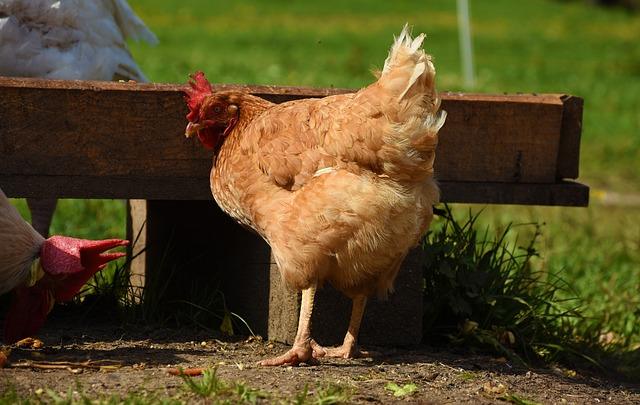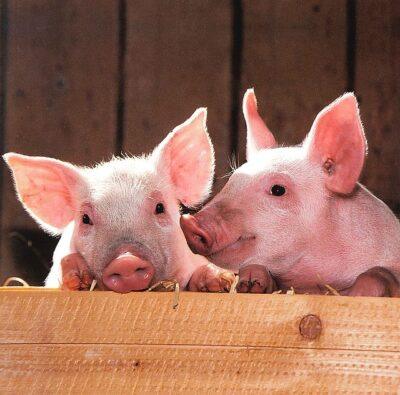When choosing a meat animal for your homestead you may begin wondering, “What animal will get me the most bang for my buck?”
Each animal uses feed differently, and some are able to turn that feed into pounds of meat more efficiently than others. This is usually expressed by what’s called a feed conversion ratio. Feed conversion ratios are a rate of measure that expresses the efficiency with which an animal converts feed into the desired output. For cattle, broiler chickens and pigs, the desired output is body mass. For dairy cows, the desired output is milk. For the purposes of this article, we are just going to focus on animals where the desired output is body mass, or pounds of meat.
The mathematical formula for a feed conversion ratio is as follows: FCR = feed given / animal weight gain.
This feed conversion ratio (FCR) is typically expressed as one number and is dimensionless, meaning it is not effected by whatever units of measure are used to calculate the ratio. A low FCR means that the animal is efficient at converting feed to the desired output, while a higher FCR means the animal is relatively inefficient. In other words, the lower the FCR, the higher the weight gain obtained from feed. It is important to remember that FCR can be calculated using several different metrics.
Some farmers calculate FCR based on live weight, for example, while some calculate based on dressed weight. Although a good place to start when looking at the feed efficiency of different livestock, FCRs also can be hard to compare between species unless the feed in question is of similar suitability to the animal in question.
Diatomaceous Earth: The All-Natural Livestock De-Wormer! [2]
That being said, let’s dive into the different FCRs of some common homestead animals.
One of the most common animals found on any homestead is broiler chickens. Broiler chickens are chickens being raised for meat, and their FCR varies widely depending on the breed raised and the conditions in which they were raised. Commercial livestock operations boast broiler chicken FCRs of 1.8 for Cornish Crosses raised in factory farm conditions. Chickens raised on pasture or free-range systems are more active and therefore have higher energy needs, translating into a higher FCR. Cornish Cross broilers can have an average FCR of 3.5 when raised on pasture, while some heritage breeds of chickens have FCRs of 4.0 or higher.
Many homesteaders choose to raise rabbits because of the relatively low cost of feedstock, ease of breeding, high protein content of their meat and short time between birth and butcher. Just as with any animal, the FCR of rabbits is highly dependent on breed and raising method (pasture vs. high grain diet). Rabbits raised on a high grain diet have an FCR anywhere between 2.5 to 3.0, and those on pasture average an FCR between 3.5 and 4.0. When choosing whether to feed primarily grain or pasture, it is important to not only look at the FCR. Consider the cost of feed (grain costs money, forage is free) and your desired turn-around time from birth to butcher.
Due to the prevalence of beef in the average American diet, there has been a lot of research done on the FCR of beef cattle. In modern feedlots, an average FCR of 6.0 is common. In this method, cattle are fed on pasture until they reach approximately 600 to 900 pounds, then they are brought to the feedlot to be raised on grain until they reach 1,300 pounds. The FCR of beef cattle raised strictly on pasture is not nearly as well researched, but preliminary data shows that the FCR will be higher for beef cattle raised strictly on pasture.
Pigs are one of the most efficient sources of red meat on the homestead. When butchered between 240 and 250 pounds, commercially raised pigs have an average FCR of 3.46. Like cattle, data for more pastured-based systems is not as easily come by, but some farmers report FCRs anywhere between 4.5 and 5.5 for pigs raised on both pasture and a ration of grain.
There are obviously many more factors to consider when choosing livestock for your homestead than just the FCR. You must take into account how much you’re willing to spend on grain, the value of raising animals on a pasture-based system, your preferred type of meat and what resources you already have available to you. FCR is not the “end all, be all” for determining how efficient an animal is or if it is the right choice for your homestead. However, it is a measurable number that can be factored into your decision, and it is a good place to start when looking at the wide variety of factors that influence raising animals for meat production.
From your experience, which animal is the most efficient for meat? Share your tips in the section below:
Aryn is a farmer and writer living in Homer, Alaska
Discover The Secret To Saving Thousands At The Grocery Store. Read More Here. [4]


